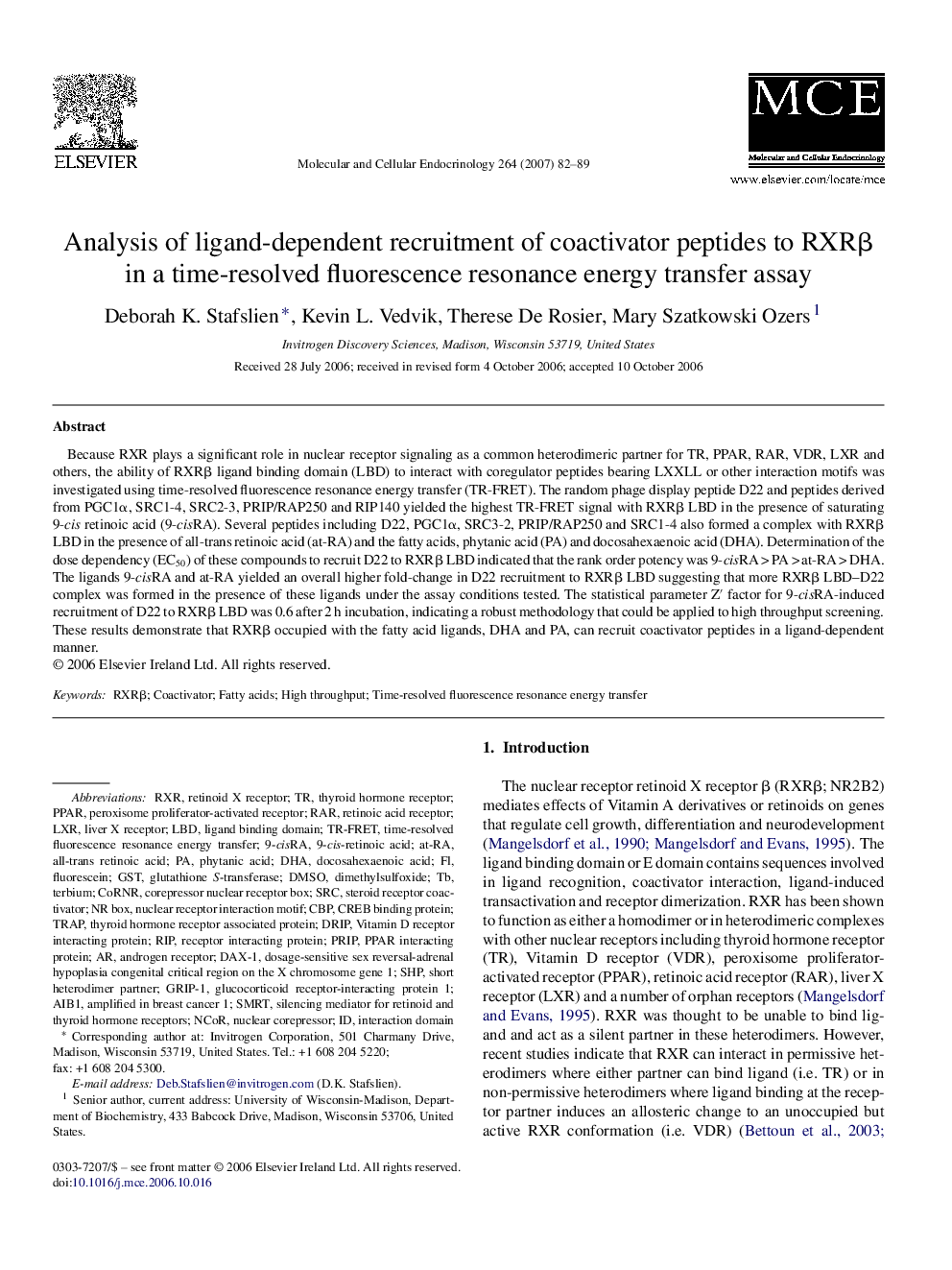| Article ID | Journal | Published Year | Pages | File Type |
|---|---|---|---|---|
| 2197963 | Molecular and Cellular Endocrinology | 2007 | 8 Pages |
Because RXR plays a significant role in nuclear receptor signaling as a common heterodimeric partner for TR, PPAR, RAR, VDR, LXR and others, the ability of RXRβ ligand binding domain (LBD) to interact with coregulator peptides bearing LXXLL or other interaction motifs was investigated using time-resolved fluorescence resonance energy transfer (TR-FRET). The random phage display peptide D22 and peptides derived from PGC1α, SRC1-4, SRC2-3, PRIP/RAP250 and RIP140 yielded the highest TR-FRET signal with RXRβ LBD in the presence of saturating 9-cis retinoic acid (9-cisRA). Several peptides including D22, PGC1α, SRC3-2, PRIP/RAP250 and SRC1-4 also formed a complex with RXRβ LBD in the presence of all-trans retinoic acid (at-RA) and the fatty acids, phytanic acid (PA) and docosahexaenoic acid (DHA). Determination of the dose dependency (EC50) of these compounds to recruit D22 to RXRβ LBD indicated that the rank order potency was 9-cisRA > PA > at-RA > DHA. The ligands 9-cisRA and at-RA yielded an overall higher fold-change in D22 recruitment to RXRβ LBD suggesting that more RXRβ LBD–D22 complex was formed in the presence of these ligands under the assay conditions tested. The statistical parameter Z′ factor for 9-cisRA-induced recruitment of D22 to RXRβ LBD was 0.6 after 2 h incubation, indicating a robust methodology that could be applied to high throughput screening. These results demonstrate that RXRβ occupied with the fatty acid ligands, DHA and PA, can recruit coactivator peptides in a ligand-dependent manner.
